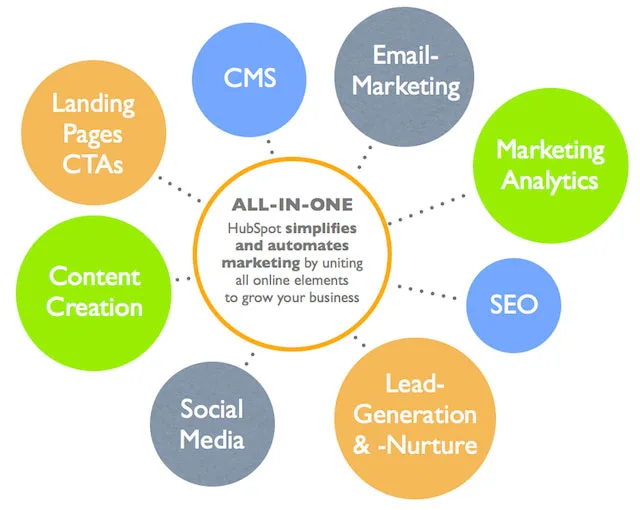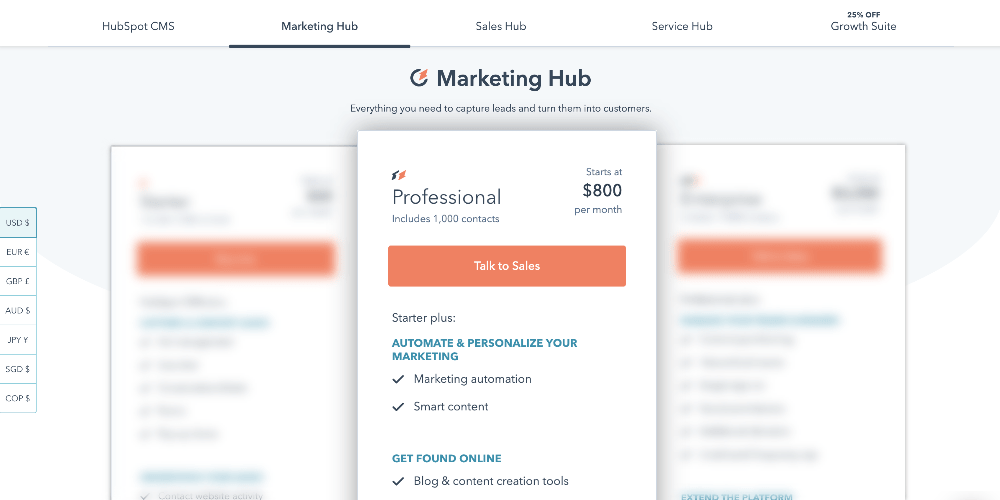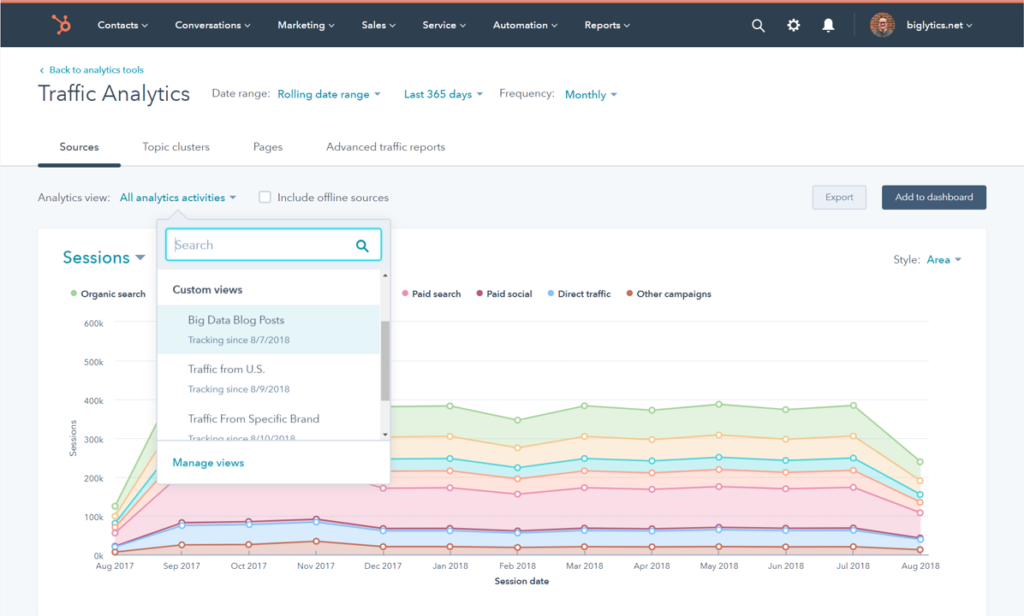
Table of Contents
- HubSpot’s Content Marketing Plan
- 4 Flaws in HubSpot’s Content Marketing Strategy
- Key Takeaways
- Conclusion
- FAQs
A blog is an abbreviation of the word “web log” and is an online journal or informational website that displays information in reverse chronological order where the top posts on the site are generally the most recent. A blogging platform allows writers or groups of writers to share their opinions, views, etc., on a particular topic. There are numerous high authority blogs, and HubSpot is an excellent example. The platform has many upsides. The content published on the platform is well-researched and insightful, and HubSpot’s content marketing strategy is known to be highly well-thought-out. These are the two main reasons behind the uncontested popularity of HubSpot’s blogs.
Before we delve into the topic at hand – the flaws in HubSpot’s content marketing strategy – let’s talk about content marketing and HubSpot’s content marketing plan.
HubSpot’s Content Marketing Plan
Content marketing is a strategic approach to marketing that creates and distributes valuable, relevant, consistent content to attract and maintain a clearly defined audience. It also drives profitable customer action.
HubSpot is an inbound marketing and sales software designed to help businesses grow. It covers areas like service, sales, marketing, and operations. HubSpot also serves as a CMS solution and offers free and paid services. Under its free plan, the services on offer include email marketing, ads management, form creation, web analytics tracking, chatbots, landing pages, and customer support. Some of these tools also allow for integration with other online tools. It’s a complete marketing and sales package designed to drive traffic, earn customers, and convert leads into sales.
HubSpot also regularly publishes blogs that have a huge global following. HubSpot’s content marketing strategy may be considered a success considering its blog’s impressive online authority. But the question is: Why are HubSpot blogs so popular? Well, because they mostly revolve around industry trends. HubSpot creates insightful content that readers can actually put to use and benefit from.
According to a source, several teams (blog, SEO, and lead generation) work together to create blog ideas at HubSpot. They divide the brainstorming process into trend research and topic research. The result? Highly impactful blog ideas! And since HubSpot blog posts often include data, quotes, or other exclusive information, they also earn backlinks, which indirectly boost their online authority.
Although promising, HubSpot’s content marketing strategy is still far from perfect. You will learn about the loopholes as we review their marketing strategy below.
4 Flaws HubSpot’s Content Marketing Strategy Has
1. HubSpot is an “all-or-nothing” tool

You can’t tap into HubSpot’s full potential without using it as an all-in-one tool. The platform allows its users to build, design, host, and modify their website without external design or IT support. That’s great, for sure! But using only a few of the functionalities on offer, while leaving out the rest will create so much additional work for you that you would want to go off HubSpot.
For instance, if your website is already built on another CMS such as WordPress and you are satisfied with it, using HubSpot for your other requirements will be frustratingly complex. And this happens because HubSpot CRM is a marketing automation, sales, and service tool designed to be used as an all-in-one solution. You might be better off using other tools if you are only looking for a handful of HubSpot’s features.
Additionally, you won’t get as much value for your money. There are other, more budget-friendly options that you can consider.
Also, HubSpot’s inflexibility may be a problem if your business needs customization. HubSpot’s content marketing must be a little more flexible for better inclusiveness.
2. It can quickly become expensive

This one is an obvious deal-breaker. HubSpot’s pricing might seem affordable at first glance as you get the CRM free of charge, along with a few other tools. The Starter plan costs only $50 per month. And that’s good news if your business is smaller or on a budget.
However, for large businesses or ambitious SMBs, HubSpot’s free version has very few features on offer. It will only allow you to access the most basic functionalities. And that’s no big deal as long as you are a small business. But then, as your business grows, so will the prices you’ll need to pay.
For instance, HubSpot’s Starter plan ($50) only allows you to add 1,000 contacts. You can add another 1,000 contacts, but for that, you will need to upgrade to the Professional plan that costs $800 per month. You can get the Enterprise plan for $3,200 a month if you need more. But this, too, limits you to only 10,000 contacts.
This means you’ll have to pay more as your contacts grow (which is likely, if you are a growing business).
So, HubSpot may not be the best or most cost-effective option for your company. It might not even be possible for your business to continue using it for a long time. HubSpot is very comprehensive and impressive, but it can also be expensive for some. HubSpot’s content marketing strategy may be considered clever at this point, as its pricing policy follows companies’ growth pattern.
3. Rigid contracts
HubSpot’s content marketing plan may be considered flawed also because their contracts are too rigid to appeal to small- and medium-sized businesses. Once you sign a contract, you are locked in for the entire contract term, whether it’s for six months or a year.
No refunds or early cancellations are allowed—it doesn’t matter if you don’t use all your contacts or don’t like the tool. This lack of flexibility in contract terms can make startups and small businesses lose a lot of money, as they can’t back out until the contract is paid in full.
This might work for businesses whose processes and strategies align with HubSpot’s features. However, it is not useful for companies still in the testing phase.
Many platforms, if not all, are eliminating contracts because they understand nobody wants to feel that kind of pressure. With HubSpot, you don’t have the scope to try out the platform to find out if it’s a good fit for your organization. So before you spend that kind of money, you must be absolutely sure that you love it and want to incorporate it into your growth plan.
4. Limited reporting

Another issue with HubSpot’s content marketing plan is that it undermines users’ core requirements like analytics and reports. HubSpot’s reporting doesn’t offer as much detail or variety as its rivals.
For instance, it doesn’t offer segmented reports on web traffic. Availability of such reports gives you vital information such as the types of traffic to your site. Additionally, HubSpot currently doesn’t allow users to check how mobile users navigate their website. But then, this information is crucial as most people these days use their phones to browse the internet.
It’s a huge problem and a setback for your business if you can’t analyze and study your audience. After all, insights and analytics are every site owner’s best friend. They are a crucial piece of the business puzzle that the HubSpot CRM fails to provide.
Key Takeaways
- A blog is an online journal or website that displays information in reverse chronological order.
- Content marketing is a strategic approach to marketing that creates and distributes valuable, relevant, consistent content to attract and maintain a clearly defined audience.
- HubSpot is an inbound marketing and sales software designed to help businesses grow.
- HubSpot blog posts often include data, quotes, or other exclusive information, which make them highly impactful.
- Pricing, inflexibility in terms of contracts, limited reporting, etc., are some drawbacks of HubSpot’s marketing strategy.
Conclusion
While HubSpot’s content marketing strategy is mostly a success, it still needs refinement to meet changing market demands and businesses’ growing requirements. Nonetheless, it’s a handy tool to help businesses ensure a smoother handoff between their teams and create remarkable customer experiences.

FAQs
HubSpot is a cloud-based CRM designed to align sales and marketing teams, increase sales enablement, boost revenue, and optimize inbound strategies to generate qualified leads.
They ensure that they separate their marketing and sales content. Their marketing content stimulates interest but doesn’t push for conversions. However, their sales content focuses on nurturing leads and turning them into loyal customers.
HubSpot’s popularity is mainly due to its simplicity and ease of use. It’s also easy to navigate, making it accessible to anyone, even those who don’t have any technical skills. It offers a lot of built-in templates and tools to help you grow your business.
The completely free version allows you to store a good number of contacts in your HubSpot database. You can also have unlimited access for your team members to view that data. Additionally, you get access to certain free tools to manage your database.
HubSpot is intuitive, scalable, and flexible. What sets it apart from other sales and marketing tools is its ability to offer businesses greater power and efficiency that helps them gain an edge over their competitors.
HubSpot’s UI is highly intuitive, which makes it not just an easy-to-use but also an easy-to-learn tool.
Latest Blogs
Explore how Google’s 2025 AI search updates triggered ranking chaos. Learn actionable strategies to adapt your SEO for AI Overviews, zero-click searches, and SERP volatility. Stay ahead now.
Learn how to rank on AI search engines like ChatGPT, Perplexity, and Gemini by optimizing your content for authority, structure, and relevance. Stay ahead in AI-driven search with this strategic guide.
Explore the best healthcare SEO services for your medical practice. Improve online visibility and effectively reach more patients in need of your services.
Get your hands on the latest news!
Similar Posts

Content Marketing
5 mins read
Top 10 Financial Marketing Agencies to Help Your Business Succeed

Content Creation
5 mins read
AI for Marketers Unlocking Smarter Strategies for Content Creation

Content Marketing Strategy
6 mins read